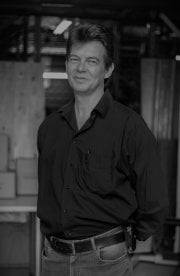
Design Build Technical Conference
The PIA would like to invite you to join us for an enlightening conference covering many of the technical information used in the design and build process.
The event will be presented online via ZOOM and will cover an array of topics.
You don’t want to miss out!
TIME TOPIC PRESENTER/S
08:00 Welcome and introductions Karlien Thomashoff / Mauneen van Wyk
08:15 3D Terrestrial Scanning + As-Built Modelling
An Exploration of GIS in the Architectural Profession Nina Vermaak, Enslin Gardiner, Chris Kirchhoff + Hugh Fraser
09:15 Transparent Building Materials Nick Wright
10:00 Alternative Energy Solutions Jeremy Gibberd
10:45 Comfort/Tea Break
11:00 Introduction to Ironmongery Nico van der Linde
11:45 Porcelain / Ceramic Tiles? Henri Alberts
12:30 International and local progress in timber construction Schalk Grobbelaar
13:15 Lunch Break
14:00 Waterwise Solutions in South Africa Jeremy Gibberd
14:45 Design Considerations to Accommodate ALL Catherine Karusseit
15:30 Renewable Energy Opportunities and Challenges in the Commercial and Industrial Property Sector in South Africa Andrew Johnson. Energy Director – Osmotic Engineering Group
Yusuf Coovadia. Director – Maverick Energy Consulting
16:15 Thank you and Closure Karlien / Mauneen
 Nina Vermaak, Enslin Gardiner, Chris Kirchhoff + Hugh Fraser
Nina Vermaak, Enslin Gardiner, Chris Kirchhoff + Hugh Fraser
– 3D Terrestrial Scanning and As-Built Modelling
– An exploration of GIS in the Architectural Profession
3D Terrestrial Scanning and As-Built Modelling
As-built Revit models and 3D laser scanning have become a key part of the Built environment industry. Laser scanning and the resultant 3D Revit models, are a quick and cost efficient way to scan and model the 3D data of a building, structure or space. This model is used to assist with optimal designs, future decision making, structural understanding and to provide project team cohesion updates. This technology has multiple benefits, including better decision making, significant cost saving, increased accuracy and critically a reduced need for revisiting the site.
An exploration of GIS in the Architectural Profession.
An introduction to GIS as an underlying foundation for initial site understanding and the feasibility of projects. We will explore the application of GIS using a few examples. We will also explore where one finds GIS data and how to use it in AutoCad or similar software. Finally we will investigate QGIS as free open source software alternatives.
Nick Wright
The Clear Advantage
A Clear Advantage – Glazing’s clear advantage is to connect environments allowing the inside out and more importantly the outside in.
But we need that space to have comfort – not form over function – but a space that doesn’t need a power station full of electricity to keep cool or warm.
This paper by way of case studies (and a little financial model) will show how to achieve comfort cost effectively with glazing available in the South African market – and with forethought and planning of the professional team to integrate these into the architecture. Great glazing disappears, bad glazing makes a building, expensive and uncomfortable.

Jeremy Gibberd
Alternative Energy Solutions
Conventional electricity supplies in many areas of South Africa have become increasingly erratic. The coal-fired power stations used to generate this electricity are also carbon-intensive and contribute to climate change and pollution. It is therefore important to understand the alternatives. The presentation will introduce alternative energy solutions and how they can be applied in buildings. First, energy challenges and opportunities in South Africa will be reviewed. Second, alternative energy solutions that can be used to respond to these challenges and opportunities will be presented. This will also comment on how these solutions can be integrated into buildings, businesses, homes and neighbourhoods. Third, examples and case studies will be used to illustrate the application of alternative approaches. Fourth, references and resources will be provided where additional detail can be found.
Nico van der Linde
Introduction to Ironmongery
Ironmongery is approximately 1% of the contract value, but easily results in 20% of the snags, therefore the correct application and combination of ironmongery products is critical when preparing an ironmongery schedule. This presentation aims to give you an overview of the various types of ironmongery and their application.
 Henri Alberts
Henri Alberts
Porcelain / Ceramic Tiles?
Porcelain / Ceramic Tiles
The presentation is designed for Architects, interior designers, QS’S developers and anyone involved in tile selection.
We discuss how to select a tile based on specifications for the required application.
We will look at causes of premature tile failures. We will also discuss the importance of correct installation and how this can extend a tile’s life cycle.
It will also cover some of the technical specification and sans regulation for ceramic and porcelain tiles.
Schalk Grobbelaar
International and local progress in timber construction
Timber has sparked renewed interest as a building material of choice, especially in the developed world. Some of the key considerations include carbon sequestration and modular construction. When trees grow, they breathe carbon dioxide, absorb the carbon and release oxygen. When the wood from sustainably grown forests is used in construction, this carbon is stored for the structure’s lifetime. Timber also promotes modular design and construction, supporting off-site manufacturing and quick and low-impact on-site assembly. Apart from this, wood is a natural insulator and is aesthetically pleasing. To promote the use of timber, various new products, standards and technologies have been developed. Continuous research and development are also taking place to increase the opportunities and effectively manage the risks associated with using timber.
 Jeremy Gibberd
Jeremy Gibberd
Waterwise Solutions in South Africa
Conventional water supplies in many areas of South Africa have become increasingly erratic. Water utilities and municipalities are struggling to meet increasing water demands from limited water resources and this situation is set to worsen under climate change.
It is therefore important to understand alternative water sources and how to develop more efficient and resilient water systems. The presentation will introduce existing and alternative water systems in urban areas and buildings. First, water challenges and opportunities in South Africa will be reviewed.
Second, alternative water solutions that can be used to respond to these challenges and opportunities will be presented. This will also comment on how these solutions can be integrated into buildings, businesses, homes and neighbourhoods. Third, examples and case studies will be used to illustrate the application of alternative approaches. Fourth, references and resources will be provided where additional detail can be found.
Catherine Karusseit
Design Considerations to Accommodate ALL
Disability is a ‘fluid, transformative and transforming state of being’ (Imrie 1996: 176) and transcends class, age, gender, nationality, ethnicity and economic status. Disability relates to the social world, forming part of life as an essential feature of the human condition. Disabilities are often mild and multiple and may be experienced in combination. Some disabilities are outwardly observable, while others remain hidden only to manifest when the person is confronted with social or environmental barriers that hinder their freedom and independence. This talk is premised on the contention that an appreciation of diversity within disability and a complexity of needs is an vital first step toward designing a built environment that accommodates all people.
 Andrew Johnson. Energy Director – Osmotic Engineering Group
Andrew Johnson. Energy Director – Osmotic Engineering Group
Yusuf Coovadia. Director – Maverick Energy Consulting
Renewable Energy Opportunities and Challenges in the Commercial and Industrial Property Sector in South Africa
Renewable Energy Opportunities and Challenges in the Commercial and Industrial Property Sector in South Africa
Discussion: Overview on the sector, policy landscape, scale of activity, technologies for distributed generation, challenges and opportunities for property sector.
Event Information
Date: 1 March 2023
Time: 08:00 – 16:30
Venue: Webinar via ZOOM
Cost: PIA Members: R700.00 Non-members: R1000.00
CPD: 1 CPD Credits in Cat 1
Links will be forwarded to all paid up registered delegates the day before the event